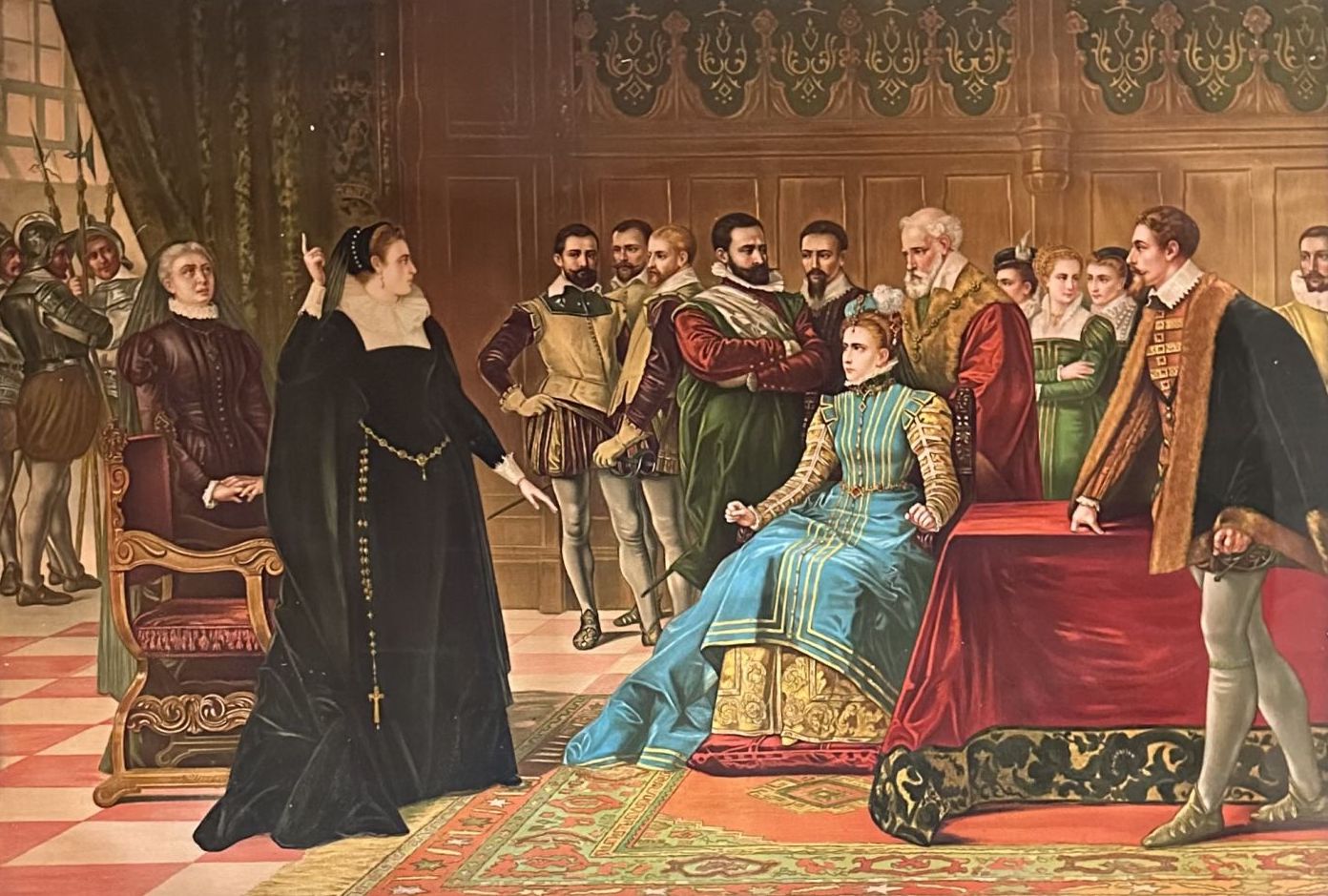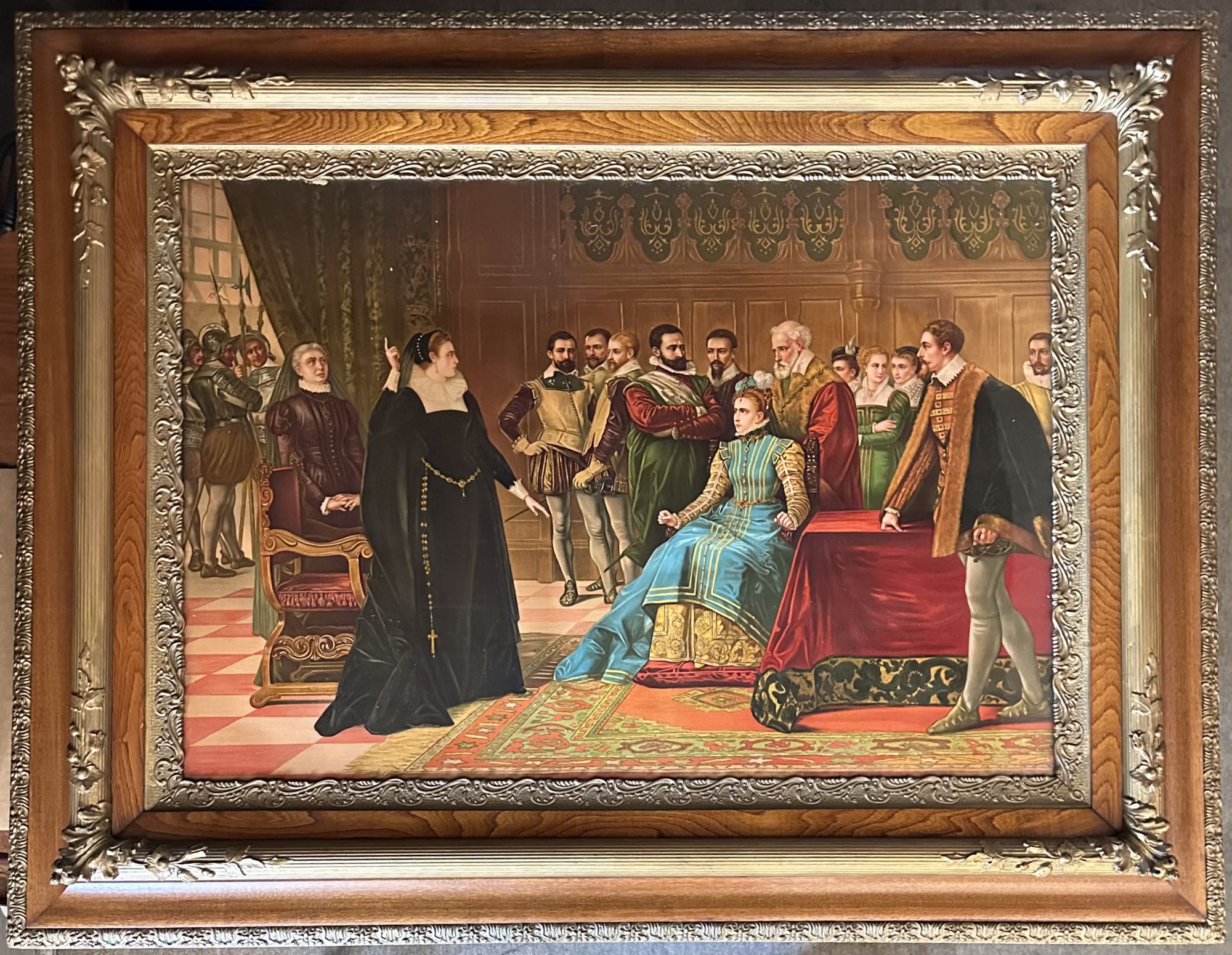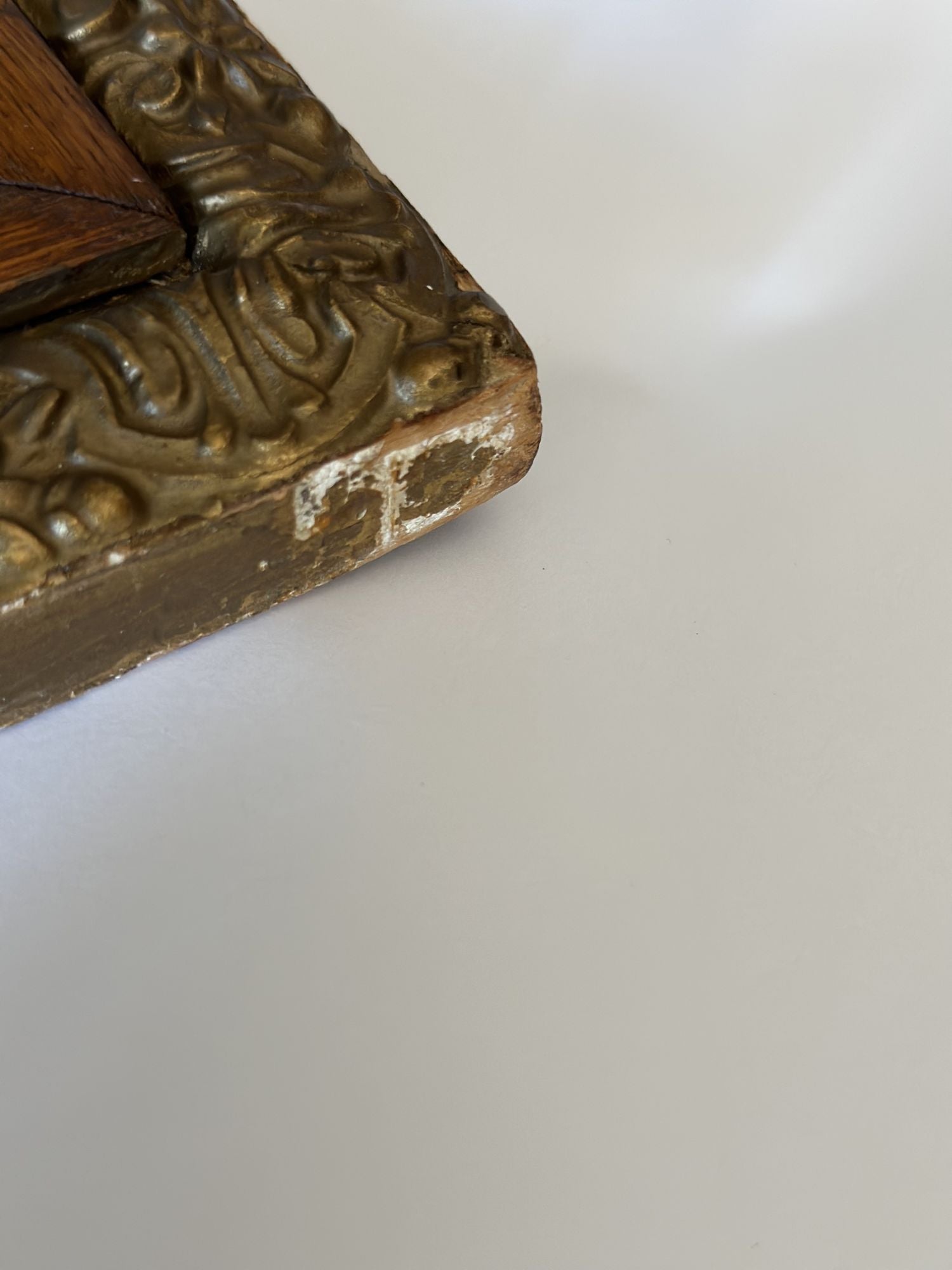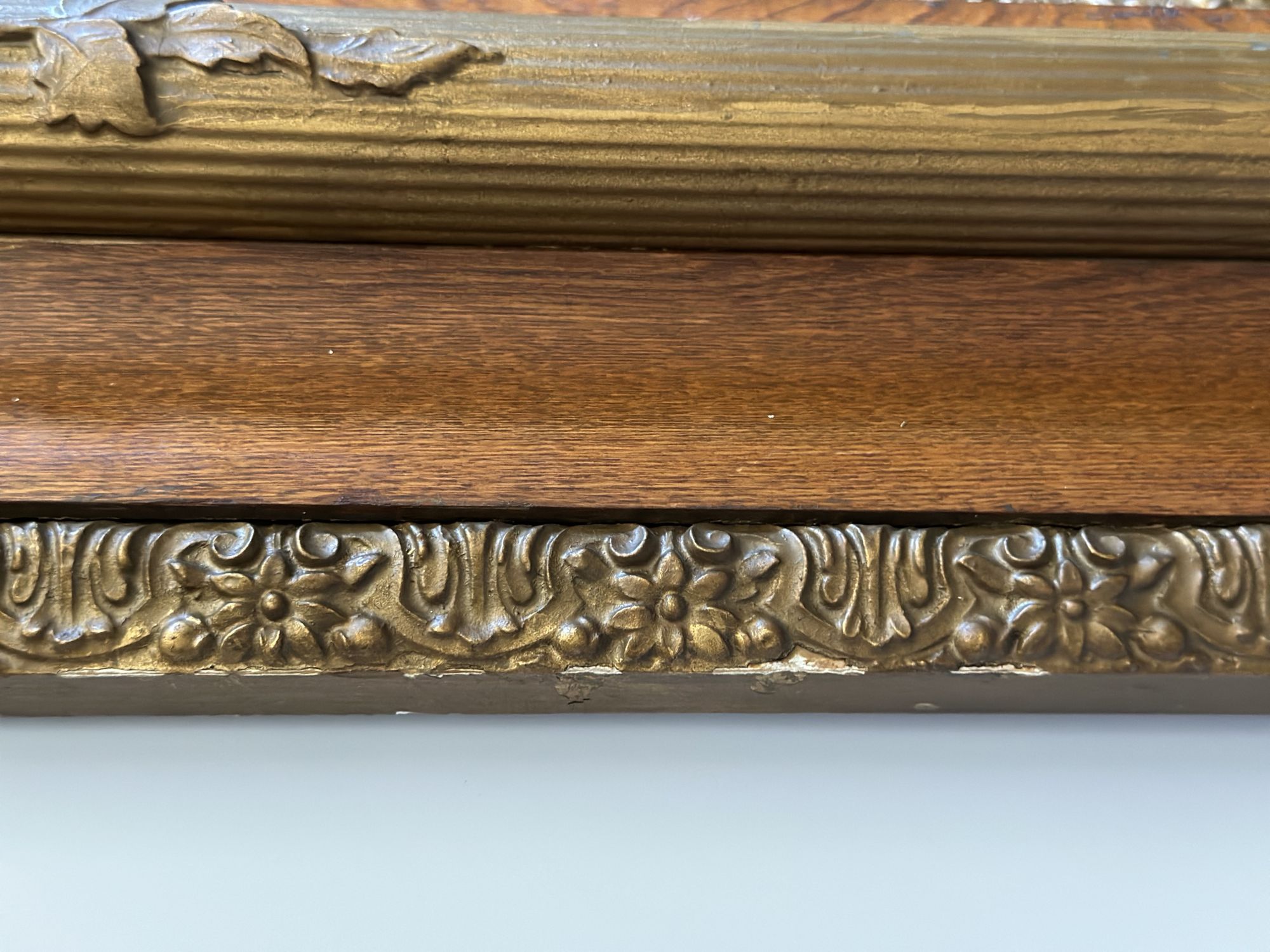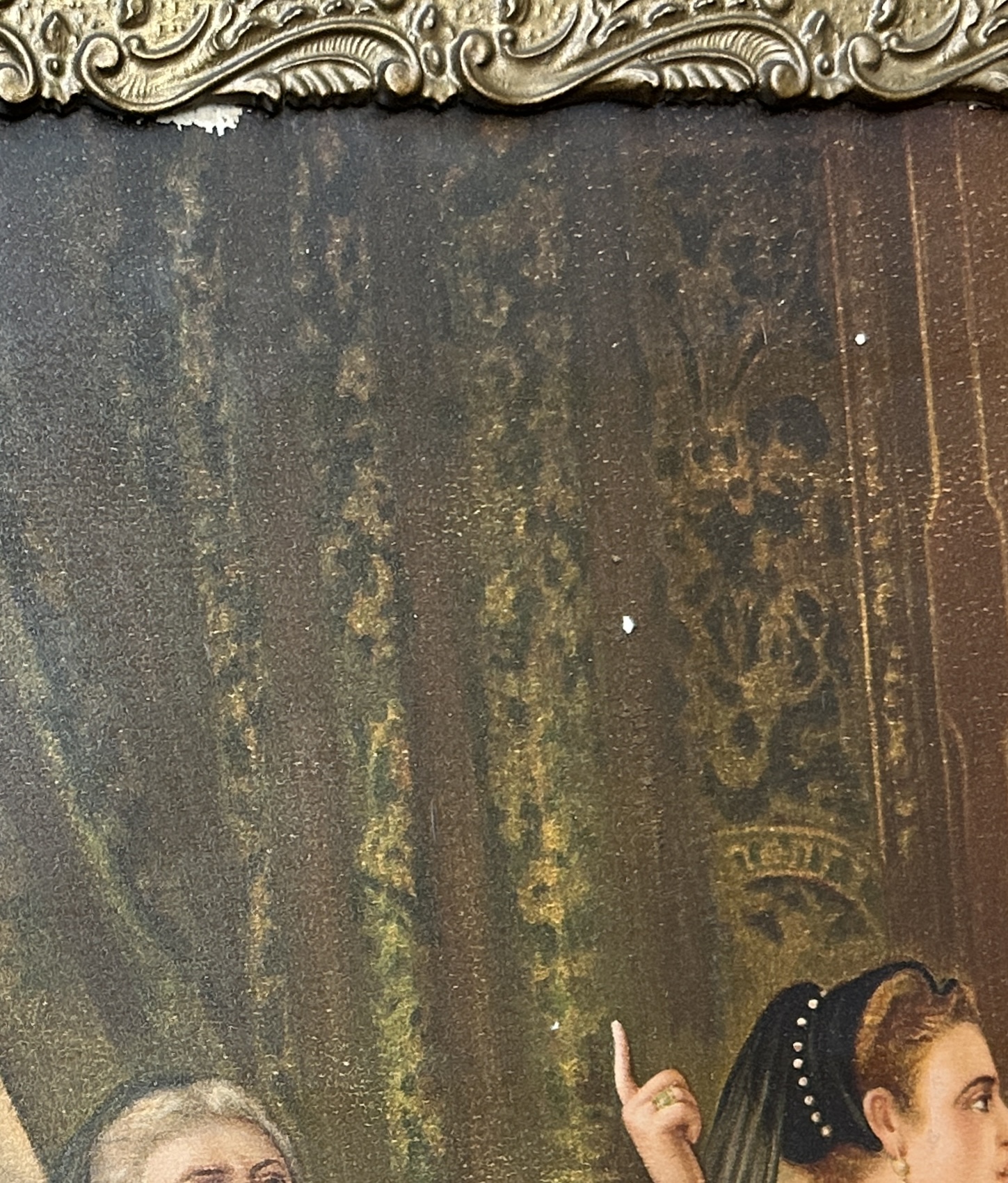




MARY, QUEEN OF SCOTS CONFRONTS ELIZABETH I
Artist: Heretofore Unknown
Price:
$7,500.00
Medium: Prints


More Details
Materials: Lithograph on paper
Dimensions: 27" x 39" x 3"
Condition: Very Good. Approximately 14 tiny pin specks of white due to lacking pigment; at top left edge just under the frame is a .25 in x .75 in area of white where pigment is lacking
Substantial wood frame in very good condition with moderately bumped corners and lightly bumped edges in several places.
Finish: Framed
About the Item: Late Victorian or early Edwardian lithograph showing an artist's imagining of a meeting between Elizabeth I, surrounded by her most prominent courtiers (such as Cecil and Walsingham), and Mary, Queen of Scots. Frame measures 53"x41".
On 24 July 1567, she was forced to abdicate in favor of her one-year-old son, James VI. After an unsuccessful attempt to regain the throne, she fled southward seeking the protection of her first cousin once removed, Elizabeth I of England.
As a great-granddaughter of Henry VII of England, Mary had once claimed Elizabeth's throne as her own and was considered the legitimate sovereign of England by many English Catholics, including participants in a rebellion known as the Rising of the North. Perceiving Mary as a threat, Elizabeth had her confined in various castles and manor houses in the interior of England. After eighteen and a half years in captivity, Mary was found guilty of plotting to assassinate Elizabeth in 1586 and was beheaded the following year at Fotheringhay Castle. Mary's life and execution established her in popular culture as a romanticized historical character.
On 24 July 1567, she was forced to abdicate in favor of her one-year-old son, James VI. After an unsuccessful attempt to regain the throne, she fled southward seeking the protection of her first cousin once removed, Elizabeth I of England.
As a great-granddaughter of Henry VII of England, Mary had once claimed Elizabeth's throne as her own and was considered the legitimate sovereign of England by many English Catholics, including participants in a rebellion known as the Rising of the North. Perceiving Mary as a threat, Elizabeth had her confined in various castles and manor houses in the interior of England. After eighteen and a half years in captivity, Mary was found guilty of plotting to assassinate Elizabeth in 1586 and was beheaded the following year at Fotheringhay Castle. Mary's life and execution established her in popular culture as a romanticized historical character.
More Galleries to Explore















 Facebook
Facebook
 Twitter
Twitter
 Email
Email
